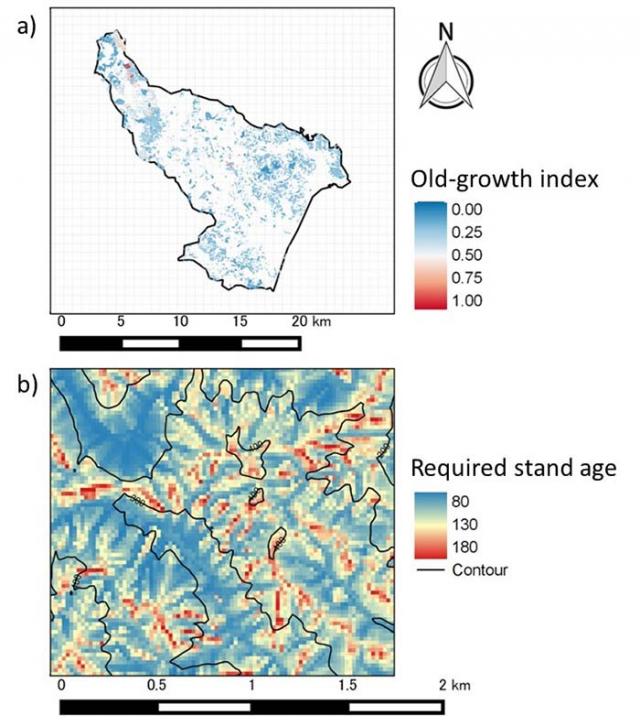Home > Research > Research Results > Research Results 2019 > Prediction of the development rate of stand structure in a natural forest to enable mapping
Update:September 4, 2019
Main content starts here.
Prediction of the development rate of stand structure in a natural forest to enable mapping
| Article title |
A spatially explicit empirical model of structural development processes in natural forests based on climate and topography |
|---|---|
| Author (affiliation) |
Yuichi Yamaura (a), David Lindenmayer (b), Yusuke Yamada (c), Hao Gong (c), Toshiya Matsuura (c), Yasushi Mitsuda (d), Takashi Masaki (e) (a) Shikoku Research Center, FFPRI, Kochi, Japan. (b) Australian National University, Canberra, ACT, Australia. (c) Department of Forest Management, FFPRI, Tsukuba, Ibaraki, Japan. (d) University of Miyazaki, Miyazaki, Japan. (e) Research Planning and Coordination Department, FFPRI, Tsukuba, Ibaraki, Japan. |
| Publication Journal |
Conservation Biology、Wiley、June 2019 DOI:10.1111/cobi.13370( External link ) |
| Content introduction |
Components of a forest stand structure, such as tree height, trunk diameter, and extension degree of the canopy, become more complex over time. These forests are called “old-growth forests” that provide a habitant for a variety of species. Similar to forest growth, the development rates of stand structures are thought to vary with their surrounding environment. However, only few studies have examined the relationship between the stand structure development rate and environmental factors. It has not been clarified what environmental conditions allow a forest to rapidly develop its complex structure following harvesting. In this study, we calculated the old-growth index, which represents the structural complexity of a natural forest, using extensive plot data from Japan’s National Forest Inventory. Thereafter, we developed a model to show the relationship between the structural development rate and various environmental factors. The results suggested that areas with high rates of structural development were those with medium snow depth, mild temperature, and flat sites. For example, it was estimated that even in the same valley, the number of years required to achieve an old-growth index of 0.5 (about the middle complexity) was more than 100 years less in the bottom slopes of the valley than that of the ridge (Fig. 1b). In addition, we were able to prepare an old-growth index prediction map from the developed model (Fig. 1a). The complexity of the forest stand structure serves as one of the indicators of biodiversity. Thus, the model developed in this study can be widely used to evaluate the biodiversity of the natural forests. Moreover, the analysis of plot data from Japan’s National Forest Inventory showed that the natural forests, particularly those over 150 years old, were unevenly distributed in areas with steep slopes or colder areas with heavy snow fall. Therefore, it is important to maintain and restore natural forests on flat sites, where the structural development rates are high.
Fig.1. Prediction map of complexity in the forest structure in the northern part of Ibaraki Prefecture in Japan. a) The target prediction area in this study was limited to the natural forests. The forests other than the natural forests are white-colored. The complexity of the structure (old-growth index) was predicted by adding the climate, topography, and the forest age to the developed model. In this selected area, high old-growth index was found in the northwestern part, where there are several old forests. b) The map shows the predicted stand age required to achieve medium complex structure (equivalent to old-growth index of 0.5). The blue-colored areas show the bottom of the valley, where the forest structure will become complex in less than 100 years. The red areas show the ridge, where the forest structure is expected to become complex in more than 180 years. Middle section of Fig. 1a is enlarged to plot. |
Copyright © Forest Research and Management Organization. All rights reserved.

